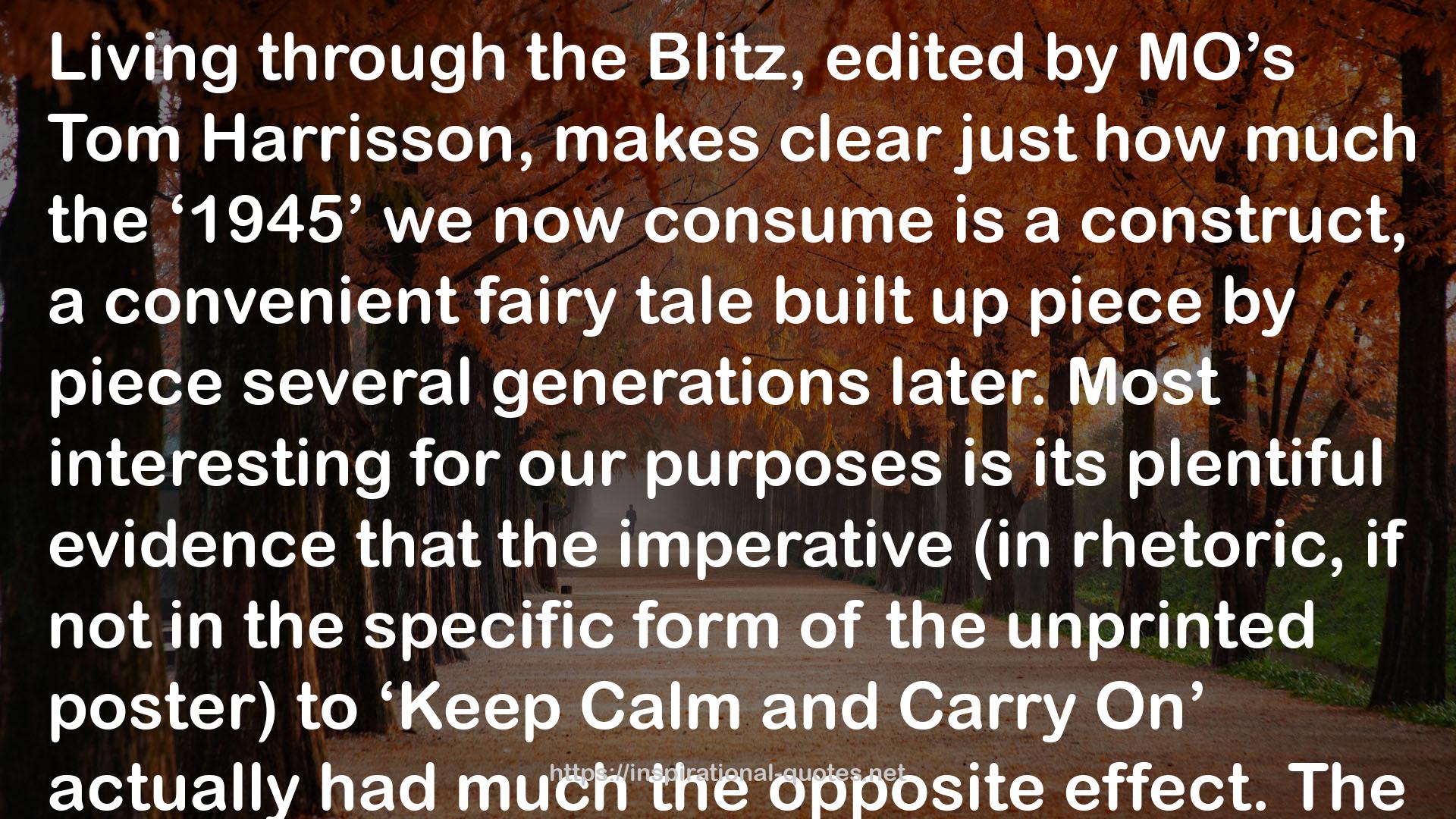" Living through the Blitz, edited by MO’s Tom Harrisson, makes clear just how much the ‘1945’ we now consume is a construct, a convenient fairy tale built up piece by piece several generations later. Most interesting for our purposes is its plentiful evidence that the imperative (in rhetoric, if not in the specific form of the unprinted poster) to ‘Keep Calm and Carry On’ actually had much the opposite effect. The patronising message infuriated most of the scores of mostly working-class diarists and interviewees whose materials make up the book. And rather than an alliance between the ‘decent’ people and their ‘decent’, benevolent public servants, Living through the Blitz finds a total divorce between the interests of each, with the civil service and local government desperately scared of the workers they were supposed to be sheltering from bombs.
For example, while the Labour left and radical architects were advocating communal shelters, central government had a firm preference for the privatisation of bomb protection. ‘Whitehall’, Harrisson writes, ‘had long declared that there must be no “shelter mentality”. If big, safe, deep shelters were established, people would simply lie in them and do no work. Worse, such concentrations of proletarians could be breeding grounds for mass hysteria, even subversion. The answer was the Anderson shelter.’2 That is, private shelters in back gardens, not necessarily safer, but less likely to encourage sedition. "
― Owen Hatherley , The Ministry of Nostalgia
